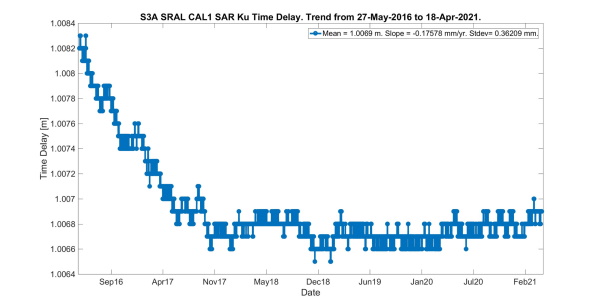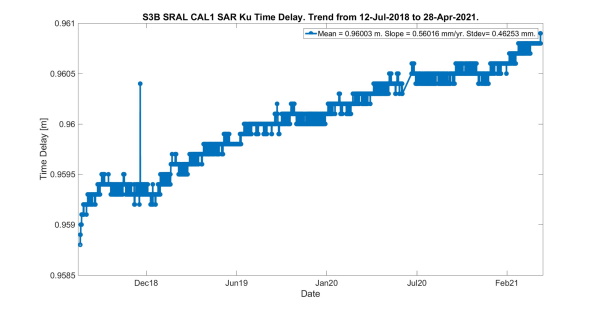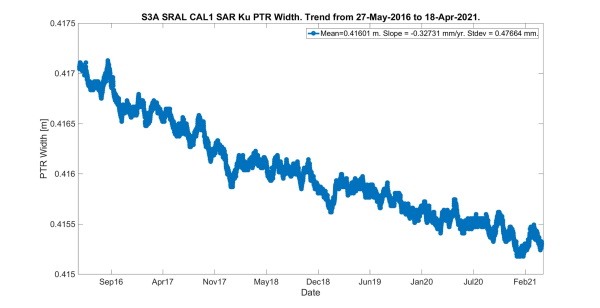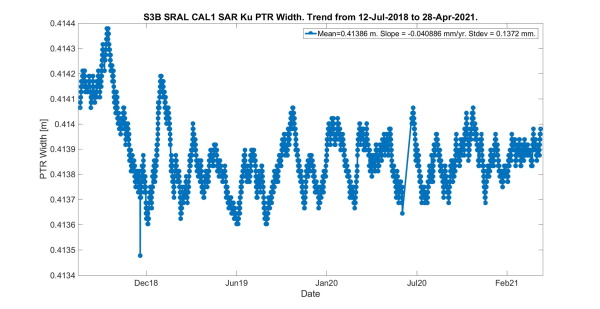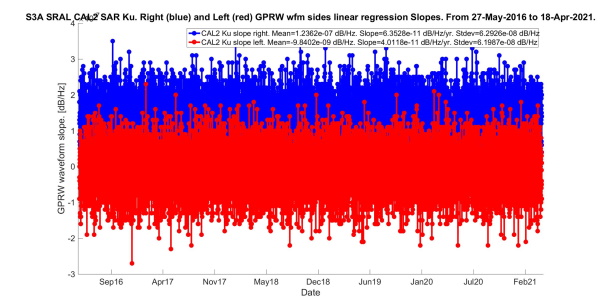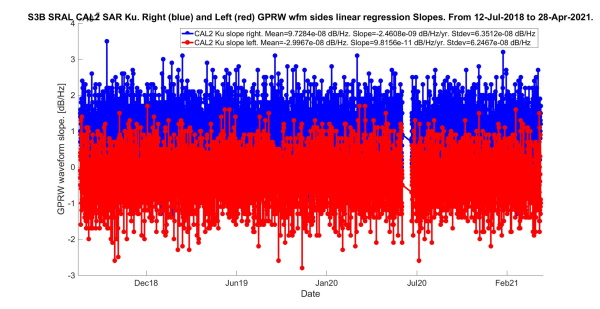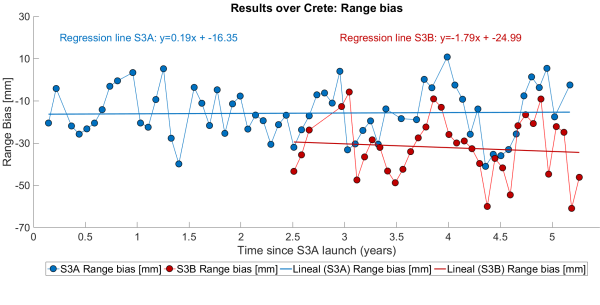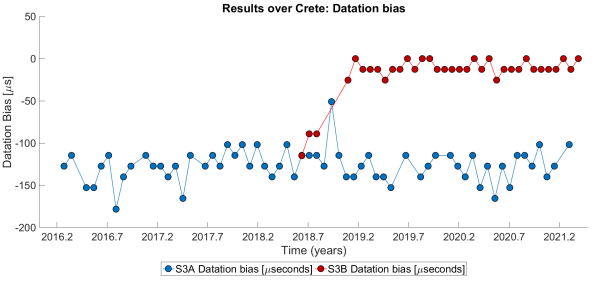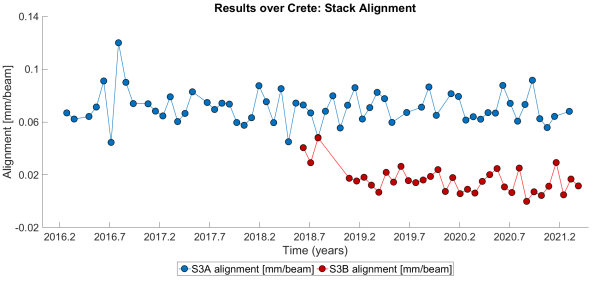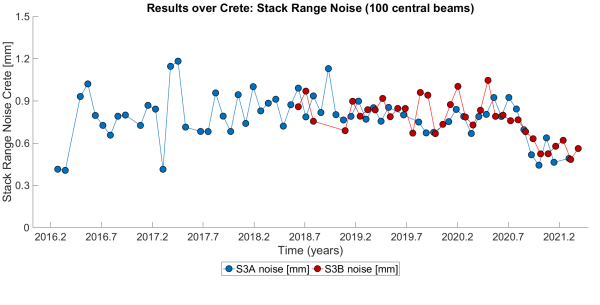Impulse Response (CAL1) Routine update
The calibration activities include the delivery of Cyclic Monitoring Reports summarising the assessment of the SRAL altimeter instrument. The performance of the instrument is assessed by monitoring the instrument calibration modes CAL1, CAL2 and AUTOCAL, as well as its temperatures on-board. Each report covers a cyclic period of 27 days and the details of each Sentinel-3A orbital cycle are available.
The CAL1 time delay is the main range instrumental correction impacting the determination of the Sea Surface Height. The CAL2 waveforms are used to compensate the effect of the system transfer function distortions on the science echoes. The figures below display CAL1 time delay for Ku-Band and CAL2 waveforms over the last period and since June 2016 respectively.
Impulse Response (CAL1) Routine update
The calibration activities include the delivery of Cyclic Monitoring Reports summarising the assessment of the SRAL altimeter instrument. The performance of the instrument is assessed by monitoring the instrument calibration modes CAL1, CAL2 and AUTOCAL, as well as its temperatures on-board. Each report covers a cyclic period of 27 days and the details of each Sentinel-3A orbital cycle are available.
The CAL1 time delay is the main range instrumental correction impacting the determination of the Sea Surface Height. The CAL2 waveforms are used to compensate the effect of the system transfer function distortions on the science echoes. The figures below display CAL1 time delay for Ku-Band and CAL2 waveforms over the last period and since June 2016 respectively.
Calibration with transponder
The processing of the TRP data is done with SRAL L1A products. Passes with IPF-SR-1 Version 06.13 (cycle 3 to 23) use reprocessed L1A and L2 data provided to the S3MPC. Passes from cycle 24 to 45 increase in IPF-SR-1 Version as newer ones become available, up to Version 06.14 for the most recent passes.
For S3A, the passes over Crete on cycles 13, 21, 54 and 70 have not been analysed because the TRP was not switched on due to extreme climate conditions and passes on cycle 48 and 50 have not been analysed due to maintenance work. For S3B, cycles 1 to 7 and 15 to 18 have not been included as the satellite was not overflying the TRP. The Crete TRP was not switched on due to extreme snow event for S3B cycle 20.
Crete:
The results for S3A show a negative measured range, 15.84 mm smaller than expected (elevation 15.84 mm higher than expected), and a datation bias of -126.52 microseconds. They also show a 0.78 mm stack noise. For S3B, the results show a negative measured range, 32.14 mm smaller than expected (elevation 32.14 mm higher than expected), and a datation bias of -17.84 microseconds. They also show a 0.77 mm stack noise. It is interesting to note that for S3B the results from cycle 21 show that the datation bias has been reduced from -114.60 microseconds (passes were in tandem orbit following S3A) to residual values.
Transponder processing results
Transponder processing. Stack analysis
